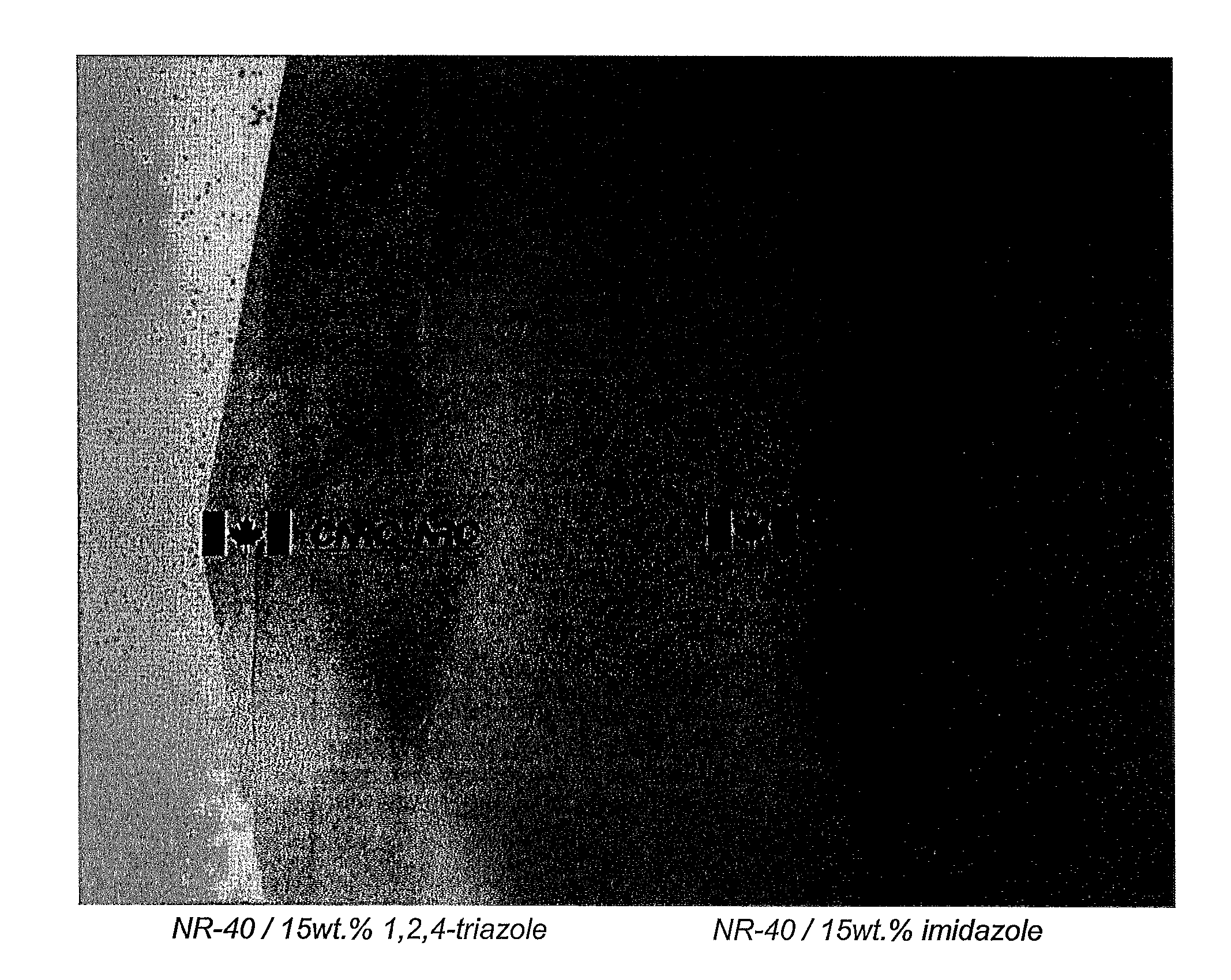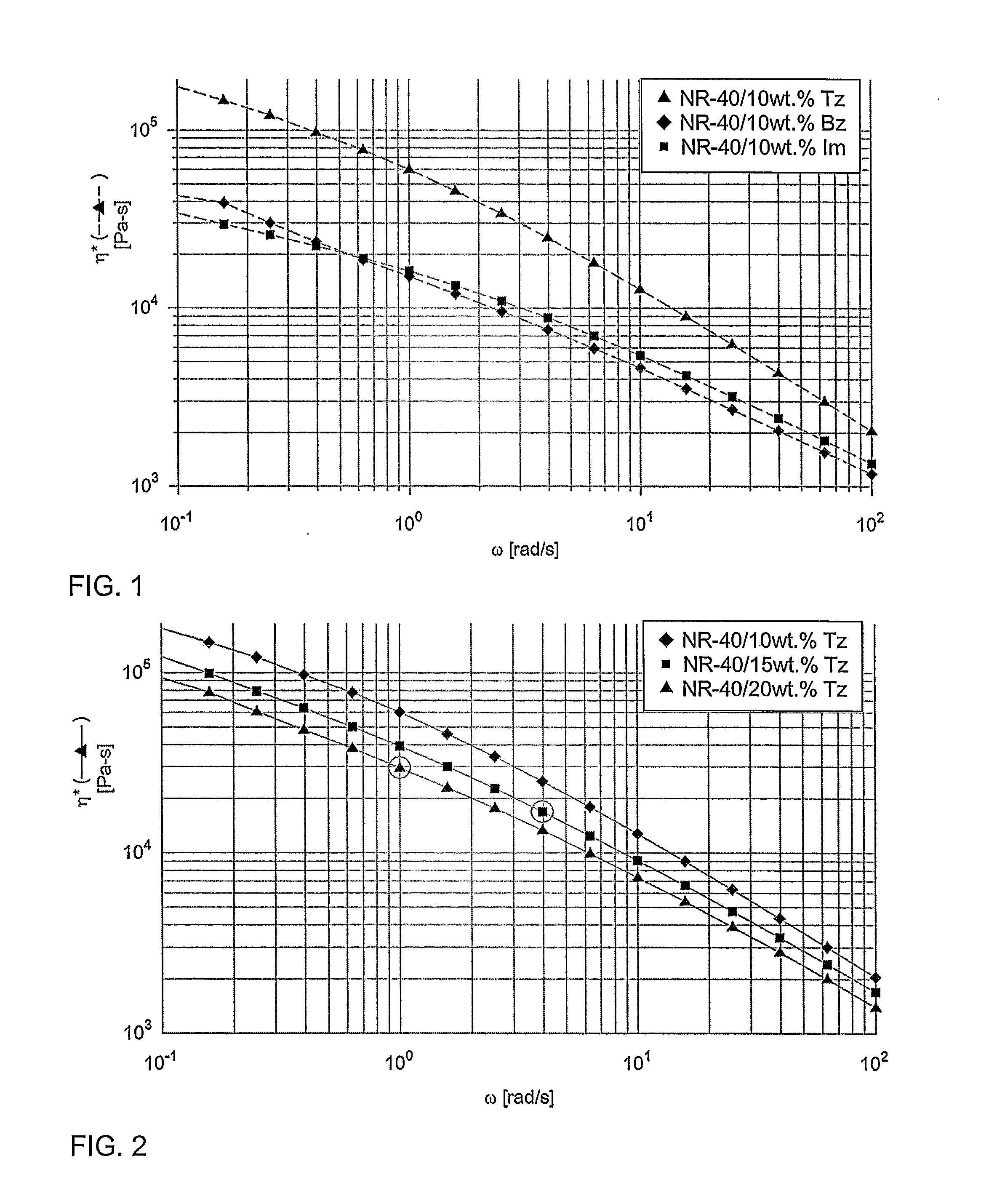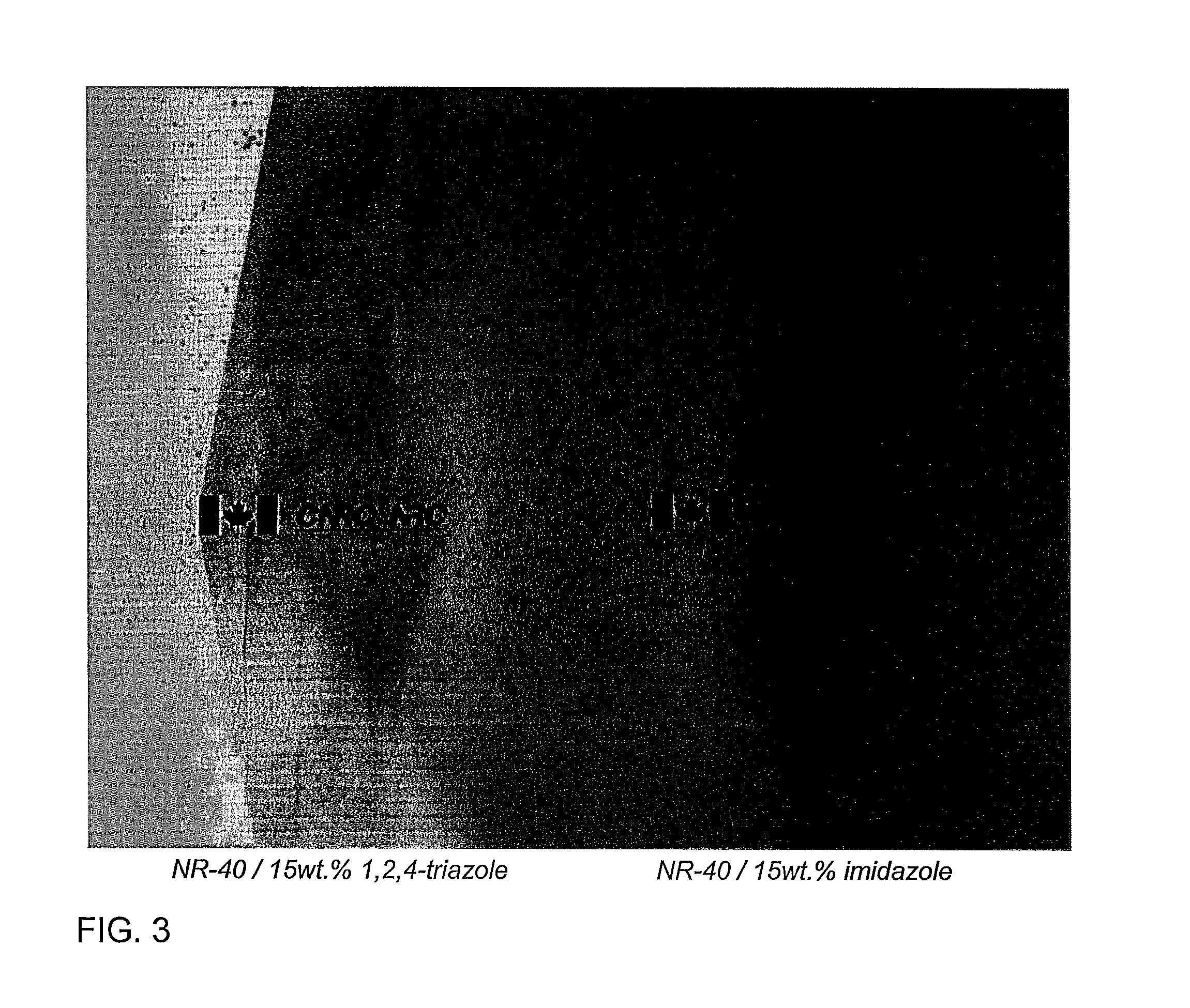Process for producing ion exchange membranes by melt-processing of acidic pfsa ionomers
a technology of acidic ionomers and ionomer, which is applied in the field of ion exchange membranes and processes for producing ion exchange membranes, can solve the problems of material cost, gas crossover and ultimately failure of fuel cells, and adds complexity to an otherwise simple process, and achieves melt processing.
- Summary
- Abstract
- Description
- Claims
- Application Information
AI Technical Summary
Benefits of technology
Problems solved by technology
Method used
Image
Examples
example 1
Preparation of PFSA / Additive Blends and their Rheological Characterization
[0038]Two additives useful in the present invention (1,2,4-triazole (Tz) and benzimidazole (Bz)) and one comparative additive from the prior art (imidazole (Im)) were selected. Nafion™ / additive (10 wt %) blends were prepared by dissolving the additive in water followed by addition of the solution to Nafion™ NR40 and stirring to allow a homogeneous swelling of the ionomer. The blends were then dried at 60° C. overnight under vacuum to remove the water. The dried solid mixture was then analyzed in a rheometer. FIG. 1 shows the results of the frequency sweep test at 260° C., where the dynamic complex viscosity (Eta or η*) is represented as a function of the oscillation frequency. While the Nafion™ NR40 sample was impossible to analyze due to its very high viscosity and visible thermal degradation of the acidic groups, the Nafion™ / additive samples show a flow behavior as the additive forms a conjugated acid with t...
example 2
Effect of the Concentration of Additive on the Melt-Viscosity
[0039]Nafion™NR40 / 1,2,4-triazole blends were prepared as described in Example 1, with additive loadings of 10, 15 and 20 wt % corresponding to 1.6, 2.6 and 3.6 mol of 1,2,4-triazole per mol of SO3− respectively. FIG. 2 shows the results of the frequency sweep test at 240° C., where the dynamic complex viscosity is represented as a function of the oscillation frequency. Nafion™NR40 / 1,2,4-triazole blends show a decrease in the viscosity as the concentration of additive increases.
example 3
Melt-Processability of the Acid Ionomer / Additive Blends Prepared in Examples 1 And 2 to Produce Practical Thin Membranes
[0040]A blend based on Aquivion® short side chain PFSA ionomer (EW=830 g / eq) and 15 wt % 1,2,4-triazole was also prepared as described in Example 1. Melt-processing was carried out at 260° C., using a 5 cc bench-top micro-extruder (DSM-Explore) equipped with a film line. The die used for thin film preparation has an opening gap of 0.1 mm and a width of 3.5 cm. The screws RPM, the calender rolls speed and torque was varied to achieve the required thickness. The strips of membranes obtained had a final width of approximately 2.5 cm and a thickness in the range of 5 to 50 microns.
[0041]Melt-processing to produce PFSA-based thin and transparent membranes was successful with triazole and benzimidazole additives. However, it is particularly noteworthy that melt-processing using imidazole as the additive completely failed to produce PFSA-based membranes, despite the fact ...
PUM
| Property | Measurement | Unit |
|---|---|---|
| Fraction | aaaaa | aaaaa |
| Fraction | aaaaa | aaaaa |
| Thickness | aaaaa | aaaaa |
Abstract
Description
Claims
Application Information
 Login to View More
Login to View More - R&D
- Intellectual Property
- Life Sciences
- Materials
- Tech Scout
- Unparalleled Data Quality
- Higher Quality Content
- 60% Fewer Hallucinations
Browse by: Latest US Patents, China's latest patents, Technical Efficacy Thesaurus, Application Domain, Technology Topic, Popular Technical Reports.
© 2025 PatSnap. All rights reserved.Legal|Privacy policy|Modern Slavery Act Transparency Statement|Sitemap|About US| Contact US: help@patsnap.com



